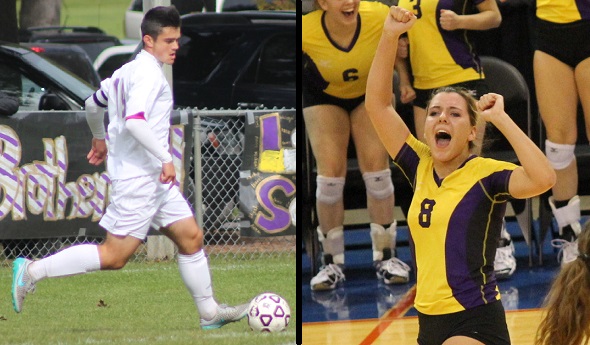
Little Leland Boasts Big Numbers, Success
By
Dennis Chase
Special for MHSAA.com
October 6, 2015
By Dennis Chase
Special for Second Half
LELAND – Small school, big aspirations.
Welcome to Leland, where the volleyball and soccer programs are once again celebrating success.
 Both teams are ranked No. 3 in state coaches polls in their respective sports and divisions.
Both teams are ranked No. 3 in state coaches polls in their respective sports and divisions.
And both are hoping to make deep runs in the MHSAA tournament.
That's been the norm in volleyball. The Comets – Class D champs in 1978 and 1980 (Lower Peninsula), 2002 and 2006 – reached the Class D Final last November before dropping a four-setter to perennial power Battle Creek St. Philip.
The soccer program is making noise, too, with three consecutive district titles, including an MHSAA Semifinal appearance in 2012.
"Obviously, the volleyball program has tradition," soccer coach Joe Burda said. "We've been around lately. We're trying to start our own (tradition)."
His Comets are 15-2, heading into Friday night's showdown at Muskegon Western Michigan Christian, the school that beat Leland in the regional final a year ago.
The volleyball team is 20-5-4. One of the losses was to St. Philip in a season-opening tournament. Another was to Class A Caledonia in the final of the Morley-Stanwood Invitational.
Some 60 students – almost half of Leland's 122 total – play soccer or volleyball.
"There's definitely momentum behind both programs," athletic director Ryan Knudsen said. "The kids are having fun, learning a lot about their sport, learning life lessons, and being successful, and that really draws kids to want to participate. It carries on from year to year and you can see it all the way down to our middle school and elementary programs. There's an excitement."
Leland is the smallest school in the Northwest Conference. Size, though, does not deter the spirit, and the Comets thrive on the challenge.
"Our coaches do an outstanding job," Knudsen said. "But we also have tremendous support from our school board, administration and community. They all understand that being the smallest school in the conference, and the fact we schedule as many challenging non-conference games as possible in all our sports, helps us prepare our student-athletes and teams to be able to have longstanding success. We're excited about the present and we're excited about the future."
That sentiment is readily apparent in volleyball. Coach Laurie Glass, who has won MHSAA titles as a player and coach at Leland, has an interesting blend in her starting lineup, ranging from two returning all-state seniors to two promising freshmen.
The team has grown considerably since that early-season loss to St. Philip.
"We have a very strong team," senior Maddie Trumbull, the team's floor captain, said. "We started off a little slow, but our freshmen are really stepping up and are a big part of our team. They have made such a difference. We are so much better than we were four weeks ago."
 Glass said playing St. Philip so early in the season was an advantage.
Glass said playing St. Philip so early in the season was an advantage.
"You have to bring your best in order to compete with St. Phil," she said. "It sets the tone for what you've got to work on in order to get back there (Battle Creek is host site of the MHSAA Finals)."
Trumbull, an outside hitter, and Eva Grobbel, a middle hitter, are the returning all-state players. They lead the team in kills. Trumbull also tops the charts in hitting efficiency and Grobbel in blocks, according to Glass.
"Maddie's even better now than she was last year (when she led the team with 572 kills), and she's really developed her leadership skills," Glass said. "Eva played club in the spring, and she's varied her offense."
Glass said opponents often focus their gameplans on trying to stop Trumbull at the net – and that's a mistake.
"We have too many other weapons and we have the ability to move (Trumbull) around so they just can't camp out on her on the outside," Glass said.
Other key contributors are senior ViAnna Hennig, who battled shin splints last season, but is now physically tougher and stronger; freshman outside hitter Allie Martin; freshman setter Ella Siddall, junior libero Julie Bardenhagen; and junior Rachel Bechtel, a strong server, and sophomore Rowan Wilson, who split time. Martin leads the team in aces, Siddall in assists. Martin and Siddall were team managers last season.
Siddall has replaced graduated Jessica Fleis as the setter.
"That's the toughest position to replace," Glass said. "We run a pretty complicated offense, so to be able to call audibles on the fly, that's a lot for a freshman. That speaks to her talent."
Bardenhagen, who's replaced another spring graduate in Whitney Schaub, has helped solidify the defense and passing game at libero.
"In our first tournament we didn't have a libero," Glass said. "We didn't have anyone to replace Whitney. We really struggled passing and didn't have a good anchor on the back row."
Now it seems to be clicking.
"It's been going so much better because I didn't know what to expect," Grobbel admitted. "We lost our libero, our setter, and they were a huge part of our team. But we all want to win a state championship. We've worked so hard together to try to make that happen."
Trumbull agreed.
"Right after the state finals (last November) we were already looking forward to this season, making plans for what we can do better," she said. "We're always thinking about how we can get better, how we can win a state championship."
"I think this team wants to go deep again," Glass added. "They have certainly set their sights on that from the beginning. If it has anything to do with work ethic and team chemistry, they have all the pieces they need to make a run."
Leland's reached at least the quarterfinals in five of the last six years. Glass attributes the program's success to player development at the middle school level, where a higher priority is placed on learning the game and proper techniques as opposed to winning.
"It's about doing the right things for the right reasons at the right time," Glass said.
Burda, meanwhile, is in his sixth season leading the soccer program. And he has it rolling with 39 players out, which allows for a junior varsity team.
The Comets are tough up front with senior Mike Osorio and junior Noah Fetterolf. Clarke Morgan, a four-year varsity veteran, anchors the defense. Rick Roman is an experienced keeper.
 "They've all been different," Burda said of his teams. "I think I see more potential in this team, though. I think we're more balanced offensively and defensively. We've always been strong down the middle, but we're strong at all of our other positions, too."
"They've all been different," Burda said of his teams. "I think I see more potential in this team, though. I think we're more balanced offensively and defensively. We've always been strong down the middle, but we're strong at all of our other positions, too."
Osorio and Fetterolf are the scoring leaders who keep opposing defenses honest. They are particularly dangerous when Leland counter attacks. Morgan, meanwhile, commands respect from his sweeper position.
"He chases down everybody and everything," Burda said.
Leland's only two losses came on the same day – setbacks to Harbor Springs and Elk Rapids in a tournament at Elk Rapids. The Comets were shorthanded that day, minus, among others, Fetterolf.
The Comets went through September without a loss, including a 4-1 victory over the Elks.
"We're just preparing every day for the next game because that's the only one that matters," Morgan said. "If we focus on one game at a time, focus on each opportunity, we can really do something in the post-season."
Morgan said the Comets are "super competitive" and that drives them in their quest to be the best.
"We're always trying to push each other to reach our full potential," the 17-year-old said.
Morgan, who also plays club soccer for the Midwest United FC travel team out of Grand Rapids, said the Comets have all "the key components," including chemistry.
"It's really cool," he said. "Our school is so small you see everyone in class, you see everyone around school and then you go to soccer practice and it's the same people. We have a good bond, a good connection."
Burda is hoping to parlay that into something special.
"We want to make another run," he said. "We want to get back to the Final Four."
 Dennis Chase worked 32 years as a sportswriter at the Traverse City Record-Eagle, including as sports editor from 2000-14. He can be reached at [email protected] with story ideas for Manistee, Wexford, Missaukee, Roscommon, Ogemaw, Iosco, Alcona, Oscoda, Crawford, Kalkaska, Grand Traverse, Benzie, Leelanau, Antrim, Otsego, Montmorency, Alpena, Presque Isle, Cheboygan, Charlevoix and Emmet counties.
Dennis Chase worked 32 years as a sportswriter at the Traverse City Record-Eagle, including as sports editor from 2000-14. He can be reached at [email protected] with story ideas for Manistee, Wexford, Missaukee, Roscommon, Ogemaw, Iosco, Alcona, Oscoda, Crawford, Kalkaska, Grand Traverse, Benzie, Leelanau, Antrim, Otsego, Montmorency, Alpena, Presque Isle, Cheboygan, Charlevoix and Emmet counties.
PHOTOS: (Top) Leland soccer senior Clarke Morgan, left, and volleyball senior Maddie Trumbull are among standouts for the school's standout teams this fall. (Middle) Senior Eva Grobbel unloads a serve during a match this week. (Below) Senior Mike Osorio lines up a kick during a game this season. (Soccer photos courtesy of Katia Skarupinski; volleyball photos by Gwen Martin.)
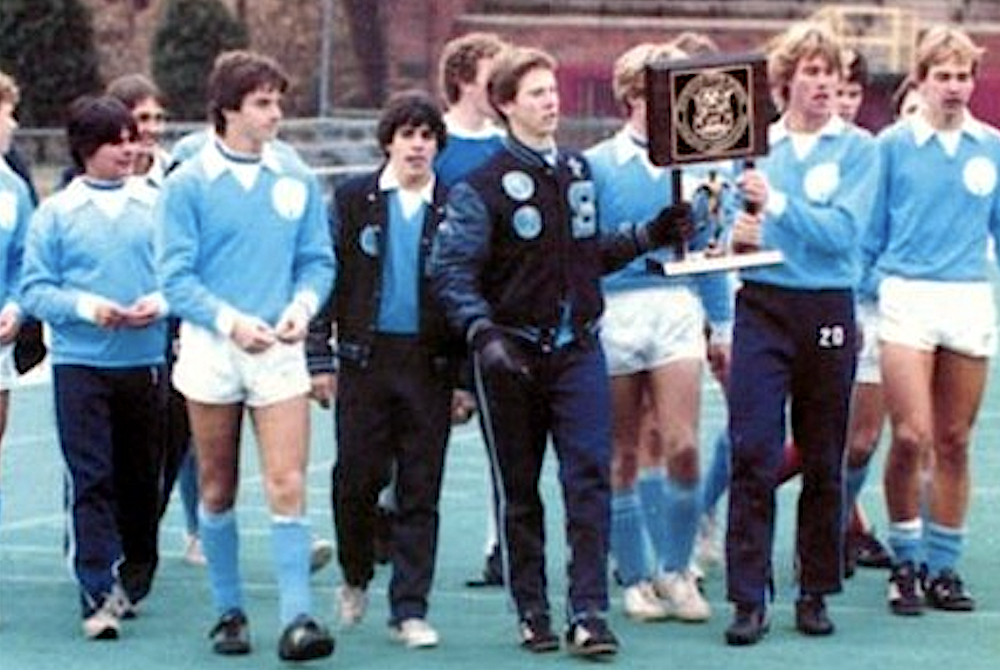
'World's Game' Makes Home in Metro Detroit, Then Grows Statewide
By
Ron Pesch
MHSAA historian
November 3, 2021
In the fall of 1982, Livonia Stevenson assistant coach Ralph Aulicino suggested to Detroit Free Press stringer Jon Pepper that “somewhere along the Livonia city limits” there should be a sign erected that proclaimed the Detroit suburb as “the state capital of soccer.”
Stevenson’s Spartans had just beaten crosstown rival Livonia Churchill 4-1 in what some called “The Battle of Livonia.” The contest, played at Flint’s Atwood Stadium, was the first-ever Class A Boys Soccer Final sponsored by the Michigan High School Athletic Association.
Guided by head coach Pious (Pete) Scerri, a former first division player in England, Stevenson finished the year with a flawless 22-0 record. Gary Mexicotte scored twice for the Spartans in the title game, finishing with 48 goals on the season. In December, he was named prep All-American.
Aulicino’s statement might have been considered a bit arrogant within the soccer community. Still, there was little question that the surrounding burgs of the Motor City were the hub of the prep soccer world in Michigan at the time.
The Hamtramck Cosmos, coached by John Geremich, finished with the MHSAA’s Class B-C honor while Grosse Pointe Woods University Liggett, coached by David Backhurst, earned the Class D trophy in the autumn tournament. The Knights finished the year with an 18-1-1 mark, and would repeat as champs in 1983, but this time in Class B-C.
Dominant
Looking back today, Aulicino’s words were prognostic.
In the spring of 1983, Stevenson’s girls, coached by Norene Divens, grabbed the MHSAA’s first Open Class championship – meaning schools of all sizes competed in one division – with an 8-0 win over Saginaw Eisenhower.
Then Scerri’s boys would appear in an incredible six of the first seven Class A title games, winning four. Divens’ girls appeared in the first three Open championships, winning two while finishing runners-up to Northville in a 5-4 overtime battle in 1984. Churchill’s girls won the 1986 Open title. When the MHSAA expanded the girls postseason to two divisions, Churchill finished runner-up in Class A to Plymouth Salem – yet another metro Detroit high school – in the springs of both 1987 and 1988.
Allen Park Inter-City Baptist won three straight boys Class D titles from 1983 to 1985.
Coach Scerri did emphasize the importance of the moment to the development and changing landscape of sports in Michigan following that first championship:
“Let me put it this way. Usually, we get the rejects from the football team. This year, the football team took three rejects from us. It’s going the other way around now.”
Culinary Delights, Old World Music, and Soccer
The chance to play for an MHSAA Finals title must have been a joyous occasion in the vibrant community of Hamtramck. Geremich, whose team won that first Class B-C championship, explained the city’s connection to the sport in 1980.
 “We’ve got a lot of Yugoslavian and Albanian kids who were brought up on soccer,” he told the Free Press. “Their parents never played football and baseball, so they look to soccer.”
“We’ve got a lot of Yugoslavian and Albanian kids who were brought up on soccer,” he told the Free Press. “Their parents never played football and baseball, so they look to soccer.”
Geremich himself was one of those kids. He came to America in 1958 from Serbia and attended Hamtramck. Soccer, however, wasn’t an option at Hamtramck during his days in high school.
Without that outlet, Geremich along with classmates Francisco ‘Pancho’ Castillo from Colombia and Jerry Podesek from Poland, all became standouts in the school’s outstanding tennis program instead. The Cosmos won 11 consecutive MHSAA Class A team tennis state titles from 1949 to 1959, and 18 of 21 between 1949 and 1969. The trio would later attend and play tennis at Southern Illinois University together.
“All three readily admit that soccer and not tennis are the national pastimes in their homelands,” stated the Grand Rapids Press in 1958.
Hamtramck’s top player in 1982 was Kanto Lulaj, who had been playing soccer since the third grade. Only a few years earlier, his family had come to Hamtramck from Albania. A 150-pound junior center-forward, he finished that championship season as Michigan’s most prolific scorer, notching 56 goals. A four-year varsity starter, he was named All-American in 1983, then played collegiately at the University of Connecticut.
Pockets
Delving into the game’s earliest history at the prep level in Michigan certainly helps explain the area’s dominance. Wildly popular among the immigrant population employed in plants across southeastern Michigan, men’s factory and recreational soccer leagues flourished in and around Detroit for years.
The Holley Carburetor F.C. team, sponsored by Detroit’s Holley Brothers Company, gained coast-to-coast attention as it battled to the National Challenge Cup championship game (today known as the Lamar Hunt US Open Cup), played before 10,000 fans at University of Detroit stadium in May 1927. A Detroit professional circuit even came into existence that same year. The short-lived Detroit Cougars, according to the Free Press, were the first incorporated soccer club in Michigan.
“School soccer enjoyed a successful season,” said the Free Press in 1928, “especially in the elementary and intermediate grades, in which more than 17,000 boys participated in the schedule formulated by the health education department of the Detroit public schools.”
Ultimately, the increasing popularity of American football among boys (and spectators) overwhelmed soccer within public school districts, and soccer never became much more than an activity played outside school, or perhaps sometimes during gym class.
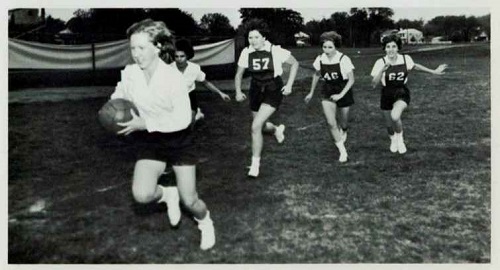 Soccer, or at least a form of the game, did appear as an intramural athletic activity in girls gym classes across the state dating back into the 1920s. Occasionally, especially in small towns, contests were played between schools from neighboring districts. For example, Buchanan’s senior girls defeated the sophomore girls from their old rival Niles, 2-0, in 1928.
Soccer, or at least a form of the game, did appear as an intramural athletic activity in girls gym classes across the state dating back into the 1920s. Occasionally, especially in small towns, contests were played between schools from neighboring districts. For example, Buchanan’s senior girls defeated the sophomore girls from their old rival Niles, 2-0, in 1928.
As state and national debate grew concerning the capacity and value of athletic activity and competition amongst girls, the sport was often modified within districts. At Ludington, speedball replaced soccer in 1948-49. At Birmingham Seaholm in 1962, girls participated in speed-o-way, a game similar to soccer that allowed use of the hands.
A Spark
Prep soccer programs found a spark among the boys at select schools in the suburbs of Detroit during the late 1950s and early 60s.
“(Initially) the only people that were playing anything approaching league soccer were the private schools,” recalled John Sala, a former coach at Birmingham Groves.
These programs were started as club sports, representing a school, but generally run outside the finances, guidance, and official sponsorship of a school’s athletic department. Opponents came where they could be found.
School yearbooks from the past help tell the tale.
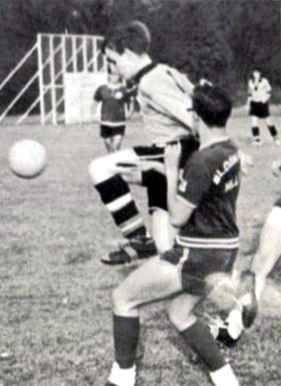 The sport was played at Bloomfield Hills Cranbrook in the 1930s, 1940s, and 1950s with games played against other private schools in Canada, Ohio, Illinois, western New York state, and Pennsylvania. Michigan schools first began appearing on the schedule in the 1960s.
The sport was played at Bloomfield Hills Cranbrook in the 1930s, 1940s, and 1950s with games played against other private schools in Canada, Ohio, Illinois, western New York state, and Pennsylvania. Michigan schools first began appearing on the schedule in the 1960s.
The team at Grosse Pointe University School (GPUS), according to its 1964 annual, “was founded five years ago by Mr. Preston, who returned this year to coach it.” The season was comprised of only six games, played against three opponents – Cranbrook, Bloomfield Hills and a season-ending game with “Preston’s Ringers.”
“With soccer only in its second year as a Varsity sport … the 1965 team showed a promise of successful seasons to come,” read the Bloomfield Hills High School yearbook. The boys finished the year with a 5-3-1 record. “Since soccer has yet to become a league sport,” the Barons faced squads from Cranbrook, GPUS, and Oakland University, as well as teams from Lowe Tech and Sarnia, both from Ontario, Canada.
Soccer became a varsity sport at Detroit Country Day School in 1965. That team finished with a 3-2-3 mark, playing contests with GPUS, Maumee, Ohio, and a newly-formed club team from Groves:
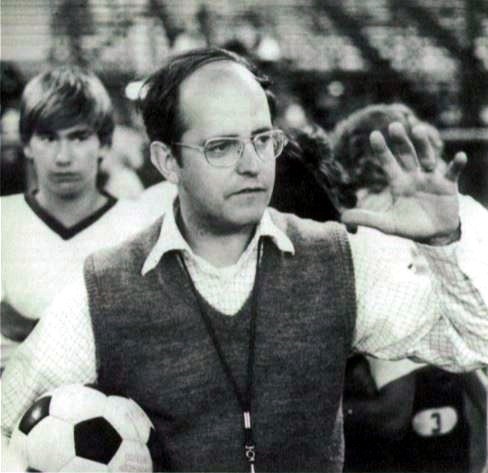 “After a late start in practice because they lacked a coach and equipment, Groves’ first soccer team introduced the rugged game to Birmingham varsity sports. Mr. John Sala took over coaching duties and helped the boys make the transition from last year’s club status to a varsity team with a full season schedule. The arrival of goals and other equipment and the donation of uniforms by Mr. Harrison Tracy boosted team morale and their play improved noticeably.”
“After a late start in practice because they lacked a coach and equipment, Groves’ first soccer team introduced the rugged game to Birmingham varsity sports. Mr. John Sala took over coaching duties and helped the boys make the transition from last year’s club status to a varsity team with a full season schedule. The arrival of goals and other equipment and the donation of uniforms by Mr. Harrison Tracy boosted team morale and their play improved noticeably.”
“When I was at Groves and starting out coaching (in 1966), I knew absolutely nothing other than having watched it,” recalled Sala, laughing at the memory. “They had a club team run by another staff member … and he left. Basically, they called me down to the office … I thought I was going to get reprimanded. (Instead) she says, ‘We have to have a coach by 4:00 today.’ I said, ‘How much does it pay?’ She said ‘$300.’ It sounds like a lot of money to me. So, I learned by doing.”
Sponsorship of soccer soon spread to other public schools in the immediate area, with teams appearing at Bloomfield Hills schools Andover and Lahser, the Livonia schools, Birmingham Seaholm, and Ferndale.
West Michigan
On the other side of the state, the soccer seed was taking root in the Greater Grand Rapids area.
“Central Christian, champion of the Christian High School Soccer League, completed its season Saturday morning at Calvin College’s Knollcrest Field by defeating Holland Christian, 3-1,” stated the Grand Rapids Press in October 1966. The four-team league also included Hudsonville Unity Christian and Grand Rapids Calvin Christian.
A year later, Kalamazoo Christian was added to the league, then Muskegon Western Michigan Christian (WMC). Casey Ver Haar, an honorable mention All-American goalie in soccer at Calvin College, coached Central Christian. Dave VerMerris, a former track star at Central Christian, then at Calvin College, took the job at WMC as coach at age 22. He had first given soccer a try as a freshman in college.
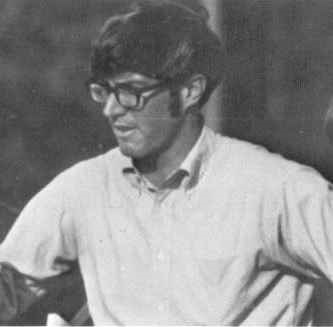 “Calvin that year had graduated quite a few of their soccer players,” recalled VerMerris, explaining how that began. “(Several) of their soccer players were immigrants – Dutch immigrants. They were hurting for bodies …”
“Calvin that year had graduated quite a few of their soccer players,” recalled VerMerris, explaining how that began. “(Several) of their soccer players were immigrants – Dutch immigrants. They were hurting for bodies …”
Marv Zuidema, the soccer coach, approached VerMerris sometime in August of 1964 and suggested he give the sport a try.
“I had some speed back in those days, and speed can take care of a lot of things if you don’t have the skill,” said VerMerris, chuckling. “His dream was I would outrun their defense and put the ball in the net. That never happened.”
Sport of the Future
Christian League officials were pleased with the level of competition and attendance at games. Between 100 and 150 spectators were showing up for contests.
“While (the) majority of West Michigan schools compete in nine major sports now,” noted longtime Press sportswriter Joe Vanderhoff in 1968, “it would be a good idea for some of the officials (at other schools) to look into the game of soccer. It’s been the No. 1 sport in Europe for years.”
According to MHSAA surveys, only 12 schools sponsored boys varsity soccer teams during the 1969-70 school year, with somewhere around 300 participants. By the 1975-76 school year, the numbers had grown to 35 schools and 1,085 participants. (Another dozen or so schools had club teams).
Without the numbers needed to meet the threshold for tournament sponsorship set by the MHSAA, the Michigan High School Soccer Coaches Association chose to host a 16-team playoff invitational beginning in the fall of 1975 to name a state champion. Groves, which had played in the 10-team North Woodward Conference, emerged from the knockout brackets to win that first title, defeating Hudsonville Unity Christian, 6-1. According to Free Press coverage at the time, more than 500 attended the championship game.
Undeniably, the sport was exploding in popularity at the participation level with American Youth Soccer Organization (AYSO)-affiliated clubs across the state. A Free Press article had noted that “a soccer team can be outfitted for about one-tenth the cost of a hockey player or one-fifth the cost of a football candidate.”
Still, it would take time. Invitational title tourneys, initially sponsored by the Coaches Association, were continued for six more years. The 1977 open-class single-elimination tournament featured 32 teams, with the state broken into eight regions.
“After a few years, they split it into an ‘A-B’ and ‘C-D’ (classification), recalled VerMerris, who remained at WMC for 30 years. “In 1979, we won the whole shooting match. In 1980, we won ‘C-D’.”
Soccer in Mid and Northern Michigan
Too small to sponsor 11-player football teams, Leland, Northport, Buckley, Lake Leelanau St. Mary, and The Leelanau School in Glen Arbor added soccer to the mix of varsity sports played within the Cherryland Conference in the fall of 1970. Leland’s Comets won the league’s first title that season.
Soccer first hit the Lansing area as a varsity sport beginning in the late 1970s.
“Right now East Lansing High is the only major area school which has included soccer in its interscholastic program,” Lansing Journal correspondent Keith Gave wrote in 1978. “In only its second year, the program brought out 70 students, enough for a varsity team and two junior varsity teams.
“Filling a schedule was a slight problem because few area schools play the game. Holt St. Matthew has had a program for about four years and Lansing Capitol City Christian has one. In fact, up until a few years ago the only soccer to be found at the interscholastic level was in the smaller, parochial schools which didn’t have football programs.
“But,” said East Lansing coach Nick Archer, “it’s just a matter of time before it’ll be all over. The game is just exploding at the youth level.”
Archer, who would coach the Trojans for 41 years, had played soccer at Michigan State and was part of the 1967 and 1968 national champion squads with the Spartans. He had scheduled games with Roeper, Cranbrook, first-year varsity teams from Saginaw Eisenhower and Flint Carman, and with Ann Arbor schools Pioneer and Huron, both in their second year of varsity competition.

Critical Mass Achieved
“In 1974-75, the cheerleaders came to me and said, ‘We want to play soccer,’” recalled Sala. “I had about 85 girls show up so I split them up into four teams – a freshman, sophomore, junior and senior team – an informal thing for the first few years. With Title IX, we already had a club team going – a reliable program.”
Soccer was made a girls varsity sport at Groves during the 1977-78 school year. Girls teams were also active at Livonia and Farmington schools, as well as at Andover, Seaholm, Lahser, and Roeper.
Numbers grew across the state to 71 boys teams and eight girls teams during the 1979-80 school year, then to 84 boys and 36 girls squads a year later.
In December 1980, a committee of superintendents, principals and athletic directors recommended to the MHSAA Representative Council that it sponsor a state soccer tournament for boys and girls beginning with the 1982-83 school year. The Representative Council concurred with the suggestion.
Troy Athens, coached by Tim Storch, one of Sala’s former players at Birmingham Groves, won the last of the A-B invitational soccer championships, played in November 1981. Four of his boys teams and four of his girls teams would later go on to win MHSAA soccer titles. Detroit Country Day won the final C-D Division invitational crown in the spring of 1982.
“More than 45,000 boys and girls in the Detroit metropolitan area – the majority of them in Oakland County – now play in youth soccer programs sponsored by communities, clubs and businesses,” stated Johnette Howard in a Free Press article on the country’s “latest boom sport,” published in September 1982.
“The skill levels of the players are unbelievably improved,” said Bloomfield Hills Lahser coach Chet Schultz. “There is not a boy on my varsity team that hasn’t played at least five or six years.”
Not all coaches were in favor of the move to MHSAA sponsorship.
“Some coaches didn’t like having the MHSAA dictate the number of games to be played, when the season could start, rules for playing Canadian teams, coaching accountability, etc.,” stated VerMerris, who played witness to, then researched and captured detail on those early days of play in West Michigan and across the state.
“The MHSSCA was very instrumental in helping make this a smooth transition and the MHSAA was very willing to work with us. Not surprisingly, not everyone was happy but this legitimized the sport and put it on a par with all the other MHSAA sponsored sports.”
 Ron Pesch has taken an active role in researching the history of MHSAA events since 1985 and began writing for MHSAA Finals programs in 1986, adding additional features and "flashbacks" in 1992. He inherited the title of MHSAA historian from the late Dick Kishpaugh following the 1993-94 school year, and resides in Muskegon. Contact him at [email protected] with ideas for historical articles.
Ron Pesch has taken an active role in researching the history of MHSAA events since 1985 and began writing for MHSAA Finals programs in 1986, adding additional features and "flashbacks" in 1992. He inherited the title of MHSAA historian from the late Dick Kishpaugh following the 1993-94 school year, and resides in Muskegon. Contact him at [email protected] with ideas for historical articles.
PHOTOS (Top) Livonia Stevenson carries its trophy off the field at Atwood Stadium. (2) Hamtramck was the first Class B-C champion. (3) Birmingham Seaholm students play speed-o-way during the 1962-63 school year. (4) A Bloomfield Hills Cranbrook player possesses the ball during the 1964-65 school year. (5) Birmingham Groves coach John Sala speaks to his team during the 1975 season. (6) Dave VerMerris became the Western Michigan Christian coach at age 22 and led the program for 30 years. (7) Stevenson’s girls won the first MHSAA Open Class championship in 1983. (Photos collected by Ron Pesch.)

